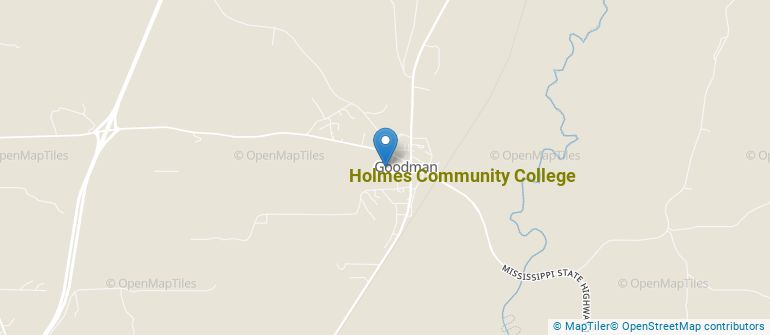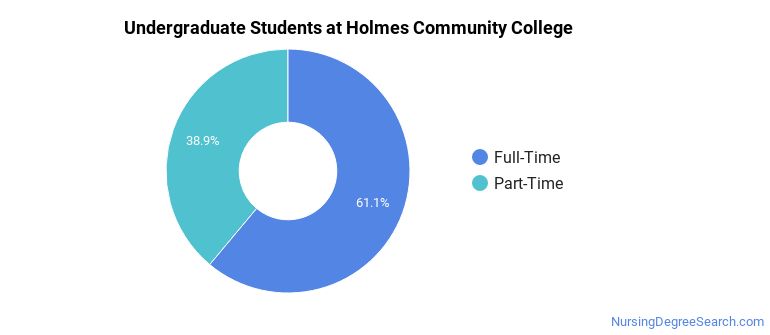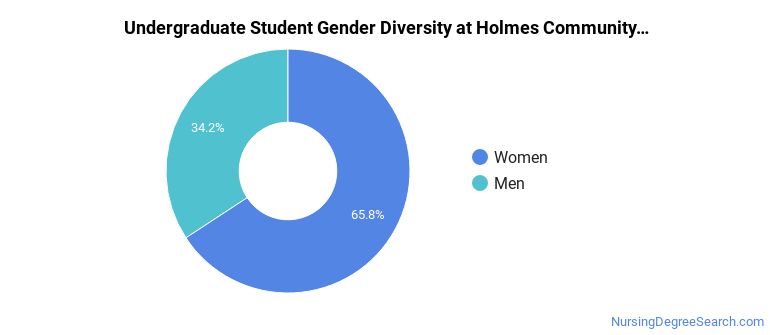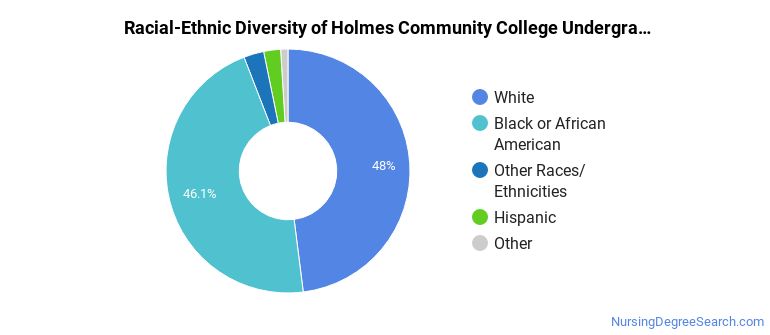Holmes Community College Nursing Programs
Located in Goodman, Mississippi, Holmes Community College is a public institution. The rural area surrounding Holmes Community College is great for students who love a peaceful atmosphere.
Where Is Holmes Community College?

Contact details for Holmes Community College are given below.
| Contact Details | |
|---|---|
| Address: | #1 Hill St, Goodman, MS 39079 |
| Phone: | 662-472-2312 |
| Website: | www.holmescc.edu |
How Do I Get Into Holmes Community College?
You can apply to Holmes Community College online at: https://hccapp.holmescc.edu/ruready_orientation/index.cfm
Can I Afford Holmes Community College?
Student Loan Debt
It's not uncommon for college students to take out loans to pay for school. In fact, almost 66% of students nationwide depend at least partially on loans. At Holmes Community College, approximately 7% of students took out student loans averaging $4,321 a year. That adds up to $17,284 over four years for those students.
Holmes Community College Undergraduate Student Diversity

Gender Diversity
Of the 3,304 full-time undergraduates at Holmes Community College, 34% are male and 66% are female.

Racial-Ethnic Diversity
The racial-ethnic breakdown of Holmes Community College students is as follows.

| Race/Ethnicity | Number of Grads |
|---|---|
| Asian | 32 |
| Black or African American | 1,524 |
| Hispanic or Latino | 74 |
| White | 1,586 |
| International Students | 0 |
| Other Races/Ethnicities | 88 |
Holmes Community College Nursing Concentrations
The table below shows the number of awards for each concentration.
| Major | Associate’s | Undergraduate Certificate | TOTAL |
|---|---|---|---|
| Registered Nursing | 114 | 0 | 114 |
| Licensed Practical/Vocational Nurse Training | 0 | 56 | 56 |
| Nursing Assistant/Aide and Patient Care Assistant/Aide | 0 | 28 | 28 |
| TOTAL | 114 | 84 | 198 |
References
*The racial-ethnic minorities count is calculated by taking the total number of students and subtracting white students, international students, and students whose race/ethnicity was unknown. This number is then divided by the total number of students at the school to obtain the racial-ethnic minorities percentage.
More about our data sources and methodologies.
